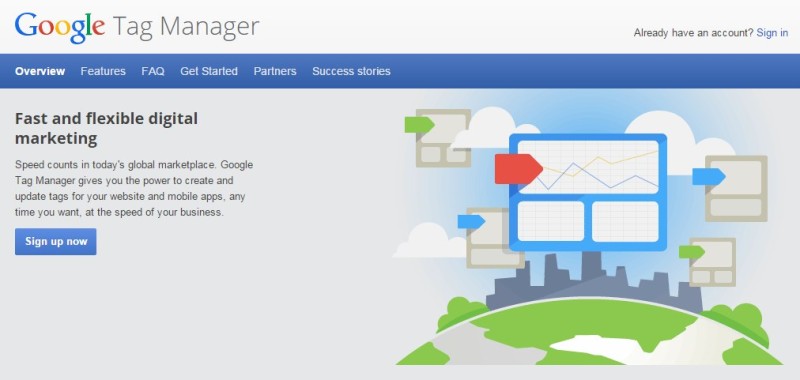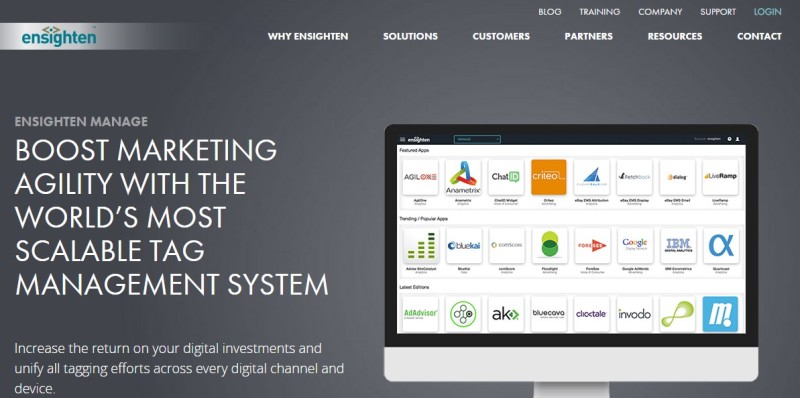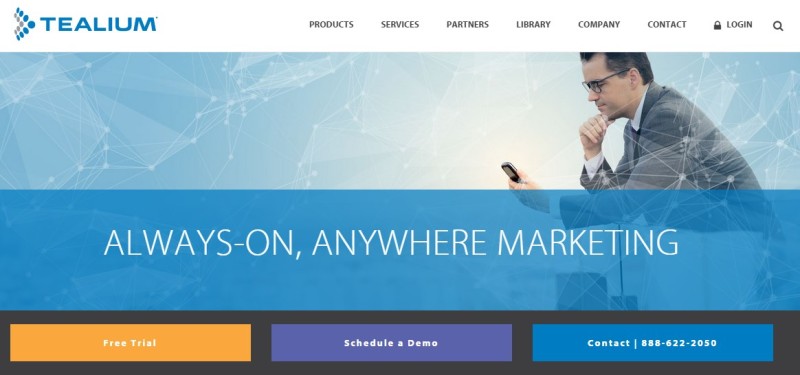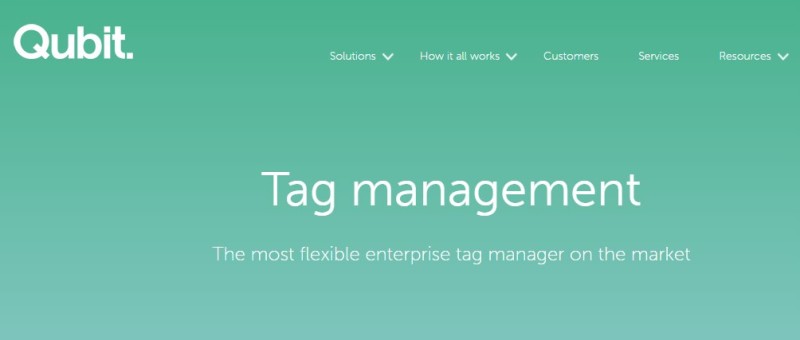Bloggers and publishers need an easy way to edit their website’s coding. While some may know coding and can edit website templates, others need to call in IT professionals to ask for help. If small changes are needed, this can waste a lot of time and resources for a task that is better handled with tag management solutions (TMS).
What is Tag Management?
Understanding tag management must first start with understanding what a “tag” truly is. The tags we’re talking about are code snippets that are often placed between a website’s “<head></head>” tags.
If you’ve ever used a small snippet of coding to track visitors on your site, display ads or track conversions, you’ve used tags before.
Adding in these tags is often tricky because you have to find the right files to edit so that you can add a code snippet to your page. If you make one little mistake, your page may not display properly or, in some cases, an error might be displayed to the end user.
It’s a simple task that is better handled using a tag management solution.
So, what is tag management? It is a way to combine all of these third-party code snippets into an easy, editable solution that doesn’t require fiddling around with coding files.
How Tag Management Can Help You
You may be wondering why you would need a tag management solution. The truth is that many websites won’t need tag management. If a site is simple and has few pages, it may take minutes to change your tags.
A good rule of thumb when deciding if you need a tag management is to ask yourself these three questions:
- Do I change tags often?
- Can tag changes be made quickly?
Larger websites may take weeks before a tag is properly changed. Why? The change has to go up the ladder. A marketing associate may ask for a change to add a publisher code on a site, his request is then directed to his manager, who then has to contact the web development team that then makes the change.
It’s a time-consuming process that is better handled with a management solution.
If you’re a marketer of any kind or a website owner that wants an easier solution to add tags to their website without having to edit any files, tag management is a great choice.
Management allows you to:
- Rapidly change tags.
- Implement new tags quickly.
- Set parameters to tags.
Tag management is all about having more control of your website while making pertinent changes in a timely manner.
Times When Tag Management is Priceless
It’s not always clear why or when tag management is useful without examples. The coding on your site today may need to be changed a year from now or 10 years from now. Tracking is a perfect example of this.
If you to track form submissions on your site, you can:
- Setup an event in the tag manager.
- Setup a rule in the tag manager.
Now, any time you want to track form submissions using any analytic program, all you need to do is update the rule since the event is already setup.
In fact, flexibility is given when you:
- Want to try a new analytics platform.
- Need to change advertiser coding.
- Want to try out a new service.
Once the events are in place, all of this can be done through the tag manager interface without changing a single line of coding on your own website.
Top 4 Tag Management Solutions
Now that you understand what tag management can do for you, it’s important to know the tag managers that are available.
Let’s start with an industry favorite by a company you definitely know: Google.
1. Google Tag Manager

Google’s Tag Manager (GTM) has caused a lot of disruption in the market. Why? It has become more widely used and has caused some companies, such as Ensighten (reviewed next), to lower their pricing.
One of the main draws for GTM is that they offer a free solution. For smaller website owners and businesses, this is a major factor.
GTM also offers numerous features, such as:
- Tag templates for various vendors outside of Google.
- Custom tag implementation.
- Auto-event tracking.
- Tag ordering and dependency setup.
- Mobile content experiments and capabilities for apps.
- Enterprise-ready for bigger businesses.
What I really like about GTM, aside from the price (free), is that you have complete control over the rules you set. You can set firing rules for certain code snippets and blocking rules for snippets. This would allow you to ignore certain form submissions or adding tags on specific pages of your site.
It’s very powerful and easy to setup.
Custom macros can also be set up in GTM to provide more power over your tag management. For a free solution, GTM is definitely one of the best options.
Pros
- Flexibility to handle all data and tag needs.
- Strong user community and documentation.
- Easy to setup vendors that include tag templates.
Cons
- Bland interface design.
- A/B testing not yet available.
GTM is definitely worth a look and never has any performance issues. It may lack some of the flexibility that we’ll be discussing with a few other solutions, but for a free tag manager, it ranks among the best.
2. Ensighten

Ensighten is a premium tag management solution used by many of the world’s biggest brands. The company targets enterprise users, but they have recently been lowering their prices to compete with other solutions, such as GTM.
If you’ve used TagMan in the past, the company has been purchased by Ensighten.
Ensighten isn’t for the small blogger or publisher that wants to manage tags effectively. Used by brands like United and Microsoft, this solution is one of the best in the industry – for a price. A fully integrated TMS, this platform offers:
- Quick deployment (most of the time).
- Conditionally-loading tags.
- Tag enrichment for complex analytics or personalization.
- Increased client performance.
- Easy scalability to your website’s needs.
- Complete function across all channels and devices,
Ensighten goes beyond tag management and offers:
- Increases in page speed by 40% through hybrid-tagging.
- Increased analytics data from fast firing tags.
- Increased ROI.
Pros
- Improves page load speed through tag optimization.
- Fast deployment, and easy to perform tests with.
- Support is top-notch with fast response times.
Cons
- Deployment times can be sporadic, causing delays.
- Pricey for smaller publishers and bloggers.
Ensighten is a great option for enterprises, larger publishers or bloggers that need better performance and are focusing on a higher ROI. The support is very responsive, and the team made a huge improvement when they went from v1.0 to v2.0 with continual updates and advancements to the product.
3. Tealium

Tealium is another enterprise solution that is a lot like Ensighten. It’s too advanced for the simple publisher that wants to manage their tags, but it comes with the advanced features enterprise websites need to stay on top of their tags at all times.
A good example of this are websites that have different entities for specific countries.
Tealium allows for tags to be loaded on a country-by-country basis. This way, you can have separate analytics coding tags for your site in the United States while having a different vendor tag for your site in India.
This is a very powerful option for larger entities.
Tealium offers a wide range of features:
- Extensions that add to the core of Tealium, which allow you to collect custom data or modify page content.
- Mobile application support is offered, allowing the use of one interface to manage mobile apps and websites.
- Multi-CDN tag delivery network to allow for fast-loading tags and top website performance.
- Over 750+ technology integrations to add vendor tags swiftly.
Tealium is one of the leaders in the tag management solutions industry, and their abundance of advanced features and functionality make their TMS perfect for larger entities.
Pros
- Advanced features that allow for complete control and extensibility of tags.
- Integration of 750+ vendors makes deployment fast and easy.
- CDN network allows for faster website loading times.
Cons
- Overwhelming interface with too many options.
Tealium is a premium option for tag management that provides the best extensibility in the industry. With over 750+ vendors integrated into the system, it’s easy to get started when using Telium.
4. Qubit Opentag

Qubit Opentag markets itself as the most flexible enterprise tag manager in the world. The team behind this TMS is extremely knowledgeable and it really shows in their Opentag solution. One of the biggest advances the team has made was to allow customizable options for developers.
Through an SDK, developers are able to build on the Opentag platform and customize it to their particular needs. This is an advanced feature meant for enterprises, but anyone that is code-savvy will find this feature to be very helpful.
The advanced features Opentag offers includes:
- Opentag’s CDN, or the choice to use your own stack for optimization.
- Easy, programmatic API to allow users to create, configure and access containers quickly.
- Integration with Qubit’s A/B testing platform to test tag deployment.
- CPA De-duplication feature removes unwanted tags, optimizing marketing channels.
- Tag library with 600+ tags for seamless, easy deployment.
One quick feature that I want to mention is that this TMS can be used with Whitelabeling. What does this mean? If you’re a developer or manager, you can add your own branding to Opentag and offer tag management as part of your own services.
Pros
- Fast loading times with integrated CDN and asynchronous tag loading.
- Easy deployment and a robust solution that users can get started with for free.
- Offers A/B testing that many other solutions fail to offer.
Cons
- Free solution does not offer phone support.
Opentag is an extremely powerful TMS that seems to target marketers and publishers. A great solution, Opentag is easy to get started with and has an intuitive design that will allow users to start managing their tags quickly and effortlessly.
Alternative TMS
I haven’t tried every TMS, but here are a few good ones that I haven’t reviewed:
All of these TMS are worth trying. While some are meant for larger publishers and bloggers, others provide free services that are robust and easy to use.
What TMS do you use? Did we miss your favorite? Let us know in the comments below.
A growth blog for professional bloggers and ad ops professionals.



![CTV vs OTT Advertising: Which one is Right Pick for Publishers? + [6 Bonus Strategies] Ott vs Ctv](https://www.adpushup.com/blog/wp-content/uploads/2023/02/Featured-Image-270x180.png)


